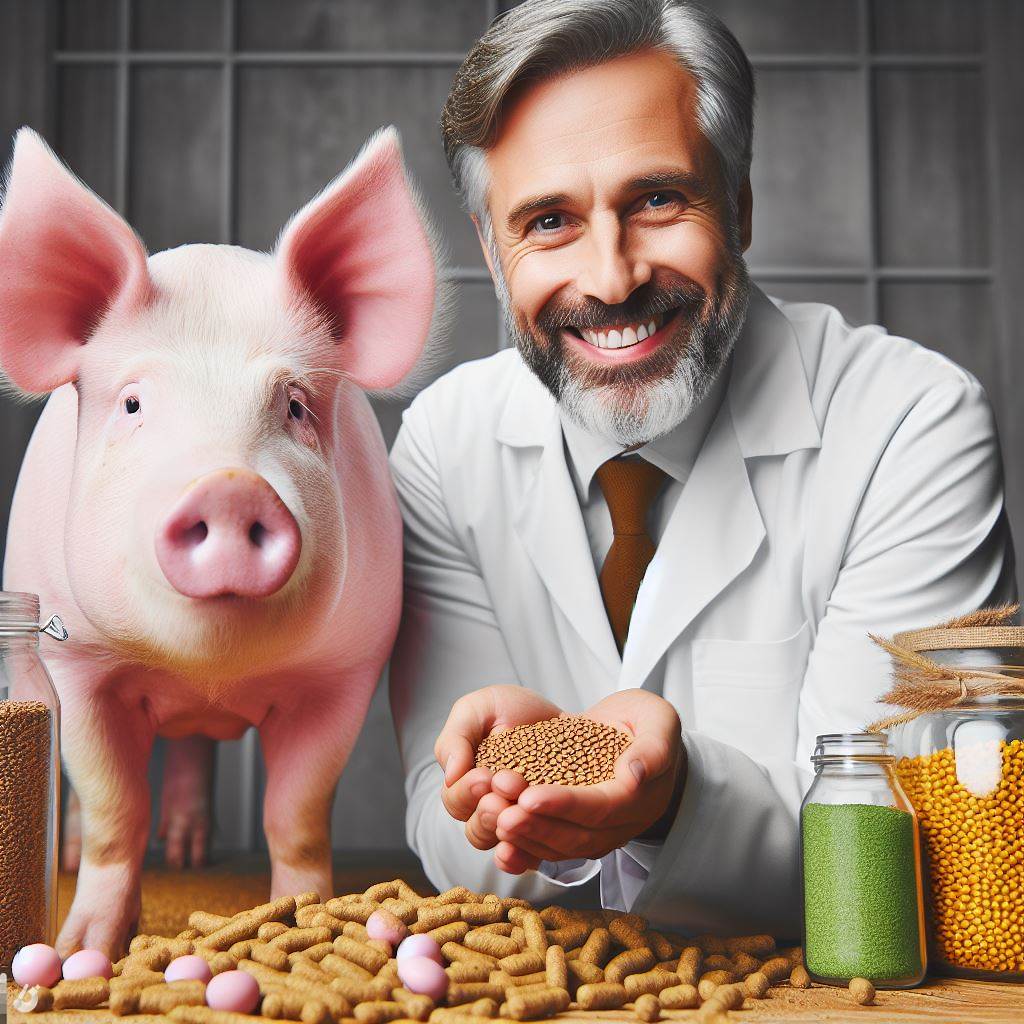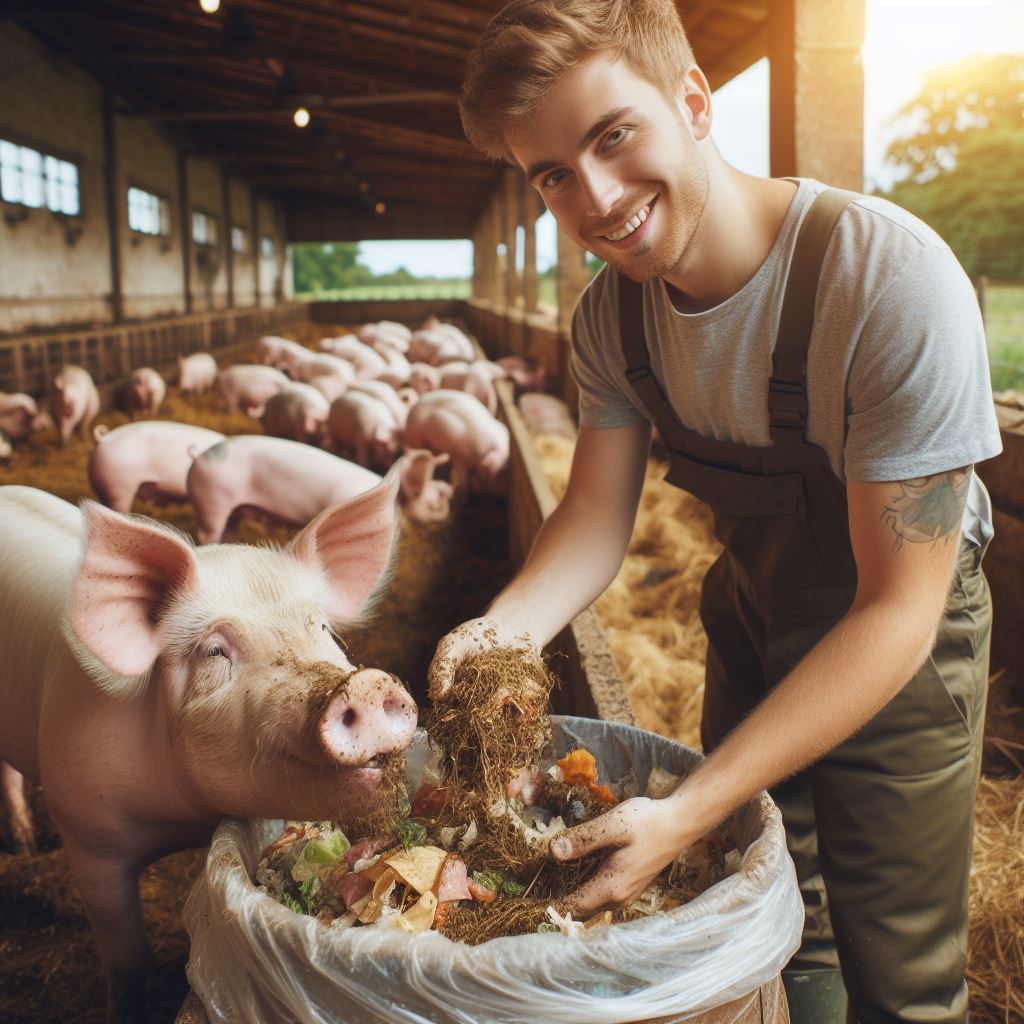Introduction
Managing pig health is crucial for the success and profitability of pig farming operations.
Effective disease control is essential in order to prevent and minimize the impact of diseases on pig populations.
Importance of managing pig health
Maintaining good pig health is vital for maximizing production, reducing mortality rates, and ensuring high-quality pork products.
Healthy pigs grow faster, have better feed conversion rates, and are more resistant to diseases.
Overview of disease control
Disease control involves implementing preventive measures such as biosecurity protocols, vaccination programs, and proper hygiene practices.
Regular monitoring and surveillance are important to detect diseases early and initiate prompt treatments.
Biosecurity measures include restricting farm access, implementing hygiene protocols for workers, and enacting strict quarantine policies.
These preventive measures help to prevent the introduction and spread of diseases, protecting the health of the entire pig population.
Vaccination programs play a significant role in disease control, providing immunity against specific diseases and reducing the severity of outbreaks.
Vaccines should be administered according to a schedule and tailored to the specific diseases prevalent in the region.
Maintaining proper hygiene practices is vital to prevent the transmission of pathogens.
This includes regular cleaning and disinfection of pig housing and equipment, as well as proper waste management to minimize disease risks.
Therefore, managing pig health and implementing effective disease control measures are critical for the overall success and sustainability of pig farming operations.
Investing in preventative strategies and vigilant monitoring can help ensure the health and productivity of the pig population.
Section 1: Identifying and Preventing Diseases
Regular monitoring of pigs for any signs of disease is essential to ensure their health and well-being.
Transform Your Agribusiness
Unlock your farm's potential with expert advice tailored to your needs. Get actionable steps that drive real results.
Get StartedIn this section, we will explore common pig diseases, important symptoms to watch for, the significance of regular veterinary check-ups, vaccinations and preventive measures, and the importance of biosecurity practices.
Common pig diseases
Common pig diseases include Porcine respiratory disease (PRD), Porcine reproductive and respiratory syndrome (PRRS), Swine influenza, Transmissible gastroenteritis (TGE), and Foot and mouth disease (FMD).
Knowing about these diseases is crucial for early detection and prevention.
Symptoms and signs to watch for
Recognizing symptoms and signs is essential for identifying diseases.
Some common signs to watch for include lethargy, inappetence, coughing, diarrhea, and fever.
Any of these symptoms should be taken seriously and promptly addressed through veterinary care.
Importance of regular veterinary check-ups
Regular veterinary check-ups play a significant role in disease prevention.
Veterinarians can provide timely vaccinations, perform diagnostic tests, and identify any health issues before they escalate.
These check-ups ensure early intervention and reduce the risk of disease outbreaks.
Vaccinations and preventive measures
Vaccinations are essential for protecting pigs against diseases.
Following the recommended vaccination schedule helps build immunity and prevent the spread of diseases within the pig population.
Additionally, implementing preventive measures, such as proper hygiene, housing conditions, and nutrition, contributes to disease prevention.
Biosecurity practices
Implementing biosecurity practices is crucial for preventing disease introduction and spread.
Strict control over the access to the pig farm, cleaning and disinfection protocols, monitoring movement of pigs and personnel, quarantining new pigs, and proper disposal of carcasses are important measures to minimize disease transmission.
Overall, identifying and preventing diseases in pigs requires a comprehensive approach.
This includes regular veterinary check-ups, timely vaccinations, strict biosecurity measures, and continuous monitoring for any signs of illness.
By prioritizing pig health and disease control, pig farmers can ensure the well-being and productivity of their animals.
Read: Livestock Management: Diverse Animal Care
Section 2: Monitoring Pig Health
Monitoring the health of pigs is crucial for ensuring disease control and preventing potential health issues.
By establishing regular health monitoring routines and implementing proper record-keeping and data analysis, farmers can identify and address any potential health issues in their pigs early on.
Daily observation plays a key role in detecting early signs of disease and maintaining pig health.
Regular Health Monitoring Routines
Implementing regular health monitoring routines is essential for proactive disease control.
These routines should involve conducting regular physical examinations of pigs, observing their behavior, and assessing their overall well-being.
Record-Keeping and Data Analysis
Maintaining detailed records of pig health information, including daily observations, medical treatments, and any unusual symptoms, is crucial.
Showcase Your Farming Business
Publish your professional farming services profile on our blog for a one-time fee of $200 and reach a dedicated audience of farmers and agribusiness owners.
Publish Your ProfileBy analyzing this data regularly, farmers can identify trends, potential risk factors, and patterns that might indicate the presence of a specific disease or health issue.
Identifying Potential Health Issues Early
Early detection of health issues is essential for effective disease control.
Timely identification allows farmers to take immediate action, preventing the spread of diseases and reducing the risk of severe outbreaks.
Regular monitoring enables the spotting of subtle changes in pig behavior, appetite, or physical appearance that may indicate an underlying health problem.
Importance of Daily Observation
Daily observation plays a vital role in monitoring pig health.
Farmers should conduct visual inspections daily, paying attention to the pigs’ behavior, body condition, and appetite.
Changes in these factors can indicate potential health issues such as reduced feed intake, lethargy, or abnormal pig behavior.
Key Observations for Optimal Pig Well-being
To ensure proper pig health monitoring, farmers can use observation checklists which include specific areas, such as:
- Body temperature: Monitoring pigs’ body temperatures can help detect fever, which often accompanies various diseases. Elevated temperatures may indicate an ongoing health issue that requires immediate attention.
- Coats and skin: Observing pigs’ skin and hair coat appearance can reveal signs of skin diseases, external parasites, or mange. Abnormal hair loss, skin lesions, or scabs indicate potential health problems.
- Respiratory symptoms: Monitoring for coughing, sneezing, abnormal breathing sounds, or nasal discharge helps detect respiratory diseases such as swine influenza, porcine respiratory disease syndrome (PRRS), or Mycoplasma pneumonia.
- Appetite and water consumption: Keeping track of pigs’ feed intake and water consumption is crucial. A sudden decrease may indicate digestive disorders, contamination of feed, or waterborne diseases.
- Fecal consistency: Monitoring fecal consistency can indicate gastrointestinal problems. Diarrhea or constipation may signal underlying health issues like bacterial infections, parasitic infestations, or dietary imbalances.
- Lameness and mobility: Abnormal gaits, lameness, or difficulty in moving can be signs of joint diseases, foot injuries, or conditions like laminitis. Regular observation can help detect these issues at an early stage.
Implementing an active observation routine and recording any abnormalities promptly can enable timely intervention and disease control.
Early identification of potential health issues allows for quicker treatment and reduces the risk of prolonged illness or the need for more aggressive interventions.
Therefore, monitoring pig health through regular routines, record-keeping, data analysis, and daily observation is essential for effective disease control.
By being proactive in observing and recording signs of potential health issues, farmers can swiftly respond, minimizing disease risks and ensuring the overall well-being of their pigs.
Read: Preventive Health Care for Cattle

Section 3: Disease Control Measures
In order to effectively manage pig health and prevent the spread of diseases, various control measures should be implemented.
Quarantine procedures for new pigs
- Newly acquired pigs should be placed in quarantine to minimize the risk of introducing diseases to the existing herd.
- During this period, strict biosecurity measures should be followed, including restricted access and proper hygiene practices.
- A veterinarian should perform thorough health checks and diagnostic tests before integrating the new pigs with the rest of the herd.
Isolation protocols for sick pigs
- Pigs exhibiting signs of illness should be immediately isolated from the healthy animals to prevent the spread of infectious diseases.
- Isolation facilities should be well-maintained and equipped with proper ventilation, heating, and adequate space for the sick pigs.
- Regular monitoring of isolated pigs should be conducted, and appropriate treatments should be administered under the guidance of a veterinarian.
Proper sanitation and cleaning methods
- A clean and hygienic environment is crucial in preventing the transmission of diseases among pigs.
- Frequent cleaning and disinfection of pig housing, equipment, and feeding areas should be carried out.
- The use of appropriate disinfectants and following recommended cleaning protocols are essential to effectively eliminate pathogens.
Effective waste management
- Proper handling and disposal of pig waste are essential to prevent the contamination of the environment and the spread of diseases.
- Adequate waste storage facilities should be in place, and waste should be disposed of in compliance with local regulations.
- Regular waste removal and maintenance of clean pig pens and surroundings are crucial for disease prevention.
Rodent and insect control
- Rodents and insects can act as disease vectors, so effective control measures should be implemented.
- Regular inspection of pig housing and surroundings should be conducted to identify and eliminate potential breeding sites.
- Appropriate pest control methods, such as traps, baits, and insecticides, should be used to minimize their presence and prevent disease transmission.
By implementing these disease control measures, pig farmers can significantly reduce the risk of disease outbreaks, protecting the health and productivity of their herds.
Read: Tech in Farming: Innovations in Livestock Care
Section 4: Nutrition and Pig Health
A balanced and appropriate diet is crucial for maintaining pig health and preventing diseases.
Proper nutrition ensures that pigs receive the necessary nutrients for growth, reproduction, and immunity.
Role of vitamins and minerals
Vitamins and minerals play a vital role in maintaining a healthy immune system and preventing deficiencies.
Feed quality and safety considerations are essential to prevent contamination and the spread of diseases.
High-quality feed should be free from contaminants, mold, and toxins that can harm pig health.
Ensuring feed safety includes proper storage, handling, and regular testing for any potential hazards.
Importance of clean drinking water
Drinking water quality is equally important for pig health, as it is a source of hydration and aids digestion.
Clean drinking water free from contaminants, bacteria, or chemicals is necessary for optimal pig health.
Regularly test water sources to ensure they meet pig consumption standards.
Proper nutrition and water quality intertwine, affecting feed digestion and nutrient utilization.
A deficient diet or contaminated water can lead to malnutrition, impaired growth, and a weakened immune system.
To maintain pig health, it is crucial to provide a balanced diet consisting of various nutrients in appropriate proportions.
Pigs require different amounts of carbohydrates, proteins, fats, vitamins, and minerals at different stages of life.
A nutritionist can formulate a diet plan that meets the specific needs of pigs based on their age, weight, and purpose.
The diet should contain high-quality feed ingredients and supplements to ensure optimal pig health.
Vitamins, such as A, D, E, and C, are essential for immune function, bone development, and reproductive health.
Minerals like calcium, phosphorus, iron, and zinc are necessary for bone formation, enzyme activities, and oxygen transport.
Feed quality and safety considerations
Feed additives like probiotics, prebiotics, and organic acids can improve gut health and enhance disease resistance.
Biosecurity measures should be implemented to prevent the introduction of pathogens through feed or water sources.
Proper cleaning and disinfection of feeding equipment, water troughs, and storage facilities are essential.
Regular monitoring of pigs’ growth, behavior, and overall health helps identify any nutritional or disease-related issues.
Any abnormalities or signs of illness should be promptly addressed to prevent the spread of diseases within the herd.
Most importantly, nutrition plays a significant role in managing pig health and disease control.
A balanced and appropriate diet, along with good water quality, is essential for maintaining optimal pig health.
Showcase Your Farming Business
Publish your professional farming services profile on our blog for a one-time fee of $200 and reach a dedicated audience of farmers and agribusiness owners.
Publish Your ProfileFeed quality and safety considerations, along with proper storage and handling practices, are vital for preventing diseases.
By ensuring pigs receive their required nutrients and clean drinking water, farmers can proactively manage pig health and reduce the risk of diseases.
Read: Breeding Livestock: Basics for Farm Success
Section 5: Collaborating with Veterinary Professionals
Collaborating with veterinary professionals is crucial for effective disease control on pig farms.
Here are some key strategies to build a strong relationship with veterinarians:
Building a Relationship with a Veterinarian
- Select a veterinarian who specializes in pig health and has experience in disease control.
- Schedule regular visits to the farm to establish a rapport and discuss potential health concerns.
- Communicate openly and honestly about farm practices, biosecurity measures, and health challenges.
- Involve the veterinarian in decision-making processes related to pig health and disease prevention.
Consulting Experts for Disease Control Strategies
- Seek advice from veterinary experts and specialists in pig diseases for tailored disease control strategies.
- Share relevant farm data, such as disease incidence rates and vaccination records, to receive accurate recommendations.
- Collaborate with veterinarians to design biosecurity protocols specific to the farm and disease challenges.
- Regularly evaluate and adapt disease control strategies based on expert advice and emerging research.
Seeking Professional Advice on Treatment Protocols
- Consult veterinarians for proper diagnosis and identification of the specific diseases affecting the pig herd.
- Discuss treatment options, including medication choices, dosage, and administration methods.
- Follow the recommended treatment protocols provided by the veterinary professional.
- Monitor treatment effectiveness and communicate any changes or adverse reactions to the veterinarian.
Regular Training and Knowledge Updates
- Participate in regular training sessions conducted by veterinary professionals.
- Attend workshops and conferences to stay updated on the latest advancements in pig health and disease control.
- Read scientific literature and research publications to expand knowledge and stay informed.
- Engage in discussions and networking with other pig farmers and veterinary professionals for shared learning.
Collaborating with veterinary professionals is a continuous process that requires active engagement and open communication.
By building a strong partnership and seeking expert advice, pig farmers can enhance disease control strategies and promote the overall health and welfare of their herd.
Conclusion
Managing pig health is of utmost importance in the farming industry.
Disease control measures play a vital role in protecting the well-being and productivity of pig herds.
It is crucial for farmers to take proactive actions to maintain pig health and mitigate the risks associated with diseases.
By implementing proper biosecurity protocols, vaccination programs, and regular veterinary check-ups, farmers can ensure the overall health and profitability of their pig operations.
Vigilance, prompt diagnosis, and early intervention are key in preventing the spread of diseases and minimizing their impact on the pig population.
Therefore, it is essential for pig farmers to prioritize disease control and management as part of their daily routine and long-term strategy.
By doing so, they can safeguard the health and welfare of their pigs, maintain productivity, and secure a sustainable future for their farming operations.




